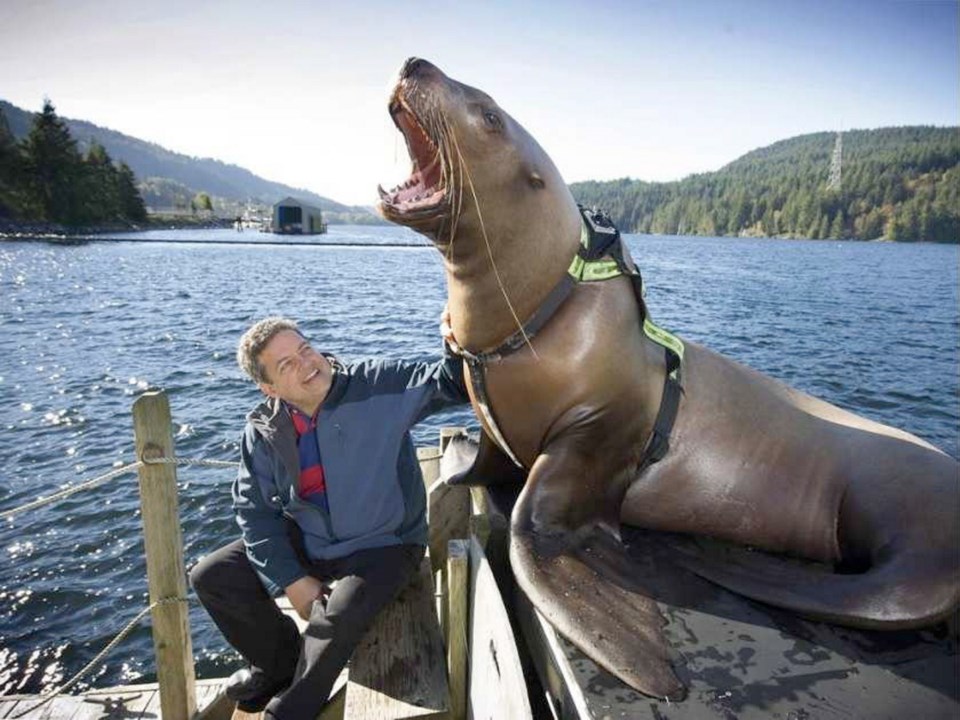A unique, long-term study involving Steller sea lions in Burrard Inlet faces being scrapped after the U.S. government stopped funding the project.
The University of B.C.’s Open Water Research Station in Port Moody, opened in 2003, is now scrambling to find donors in hopes the facility can remain open — not just to study sea lions, but also local harbour seals and invasive species transported through international shipping.
“We still have so much to do here,” said Andrew Trites, a professor in UBC’s Marine Mammal Research Unit. “We have this incredible research facility right on the waters of Vancouver. If it closes down, it will never ever happen again. There is no other place like it.”
Trites has approached the Port of Vancouver to see if it might contribute to maintaining the station. The facility already has support in northern California, where North Coast Brewing Company is poised to release a new beer, Steller IPA, and share profits with the station. Disney and ABC recently used the station as a location for a pilot TV show (The Deep, about a biologist running a marine science centre), with the prospect for more filming if the show is picked up.
“There is the potential for this place to be recognized all over the world, like Molly’s Reach on The Beachcombers,” Trites said with a smile.
The U.S. National Oceanic and Atmospheric Administration gave the program more than $1 million a year at its peak, but that dropped to $300,000 this year. The program will be wound up at the end of December unless alternative funding can be found.
Trites isn’t entirely certain why the U.S. cancelled the funding, but it’s possible some officials only see the value in researching wild animals, not captive ones.
“You know the day will come,” Trites said of the funding drying up. “Still, when it happens, there’s a little bit of denial and shock.”
The station has dockside offices, research vessels and two sea pens, and needs $200,000 per year to keep operating at a basic level, with research costs adding another $100,000. Sea lions eat about 11 kilograms of herring and half a kilogram of squid per day.
Eight female sea lion pups were taken from Triangle Island off northern Vancouver Island between 1997 and 2003 to be used for research by UBC and the Vancouver Aquarium. Research started at the aquarium, then expanded to the open-water site in a program funded by the U.S. to find answers to a dramatic decline in Steller sea lions in western Alaska and the Aleutian Islands.
“We couldn’t really understand diving and foraging abilities because of constraints of pool sizes,” Trites explained. “If we could taken them to the open ocean, we could address some of the questions that had eluded researchers — things we can’t answer in the wild or in an aquarium.”
Researchers in Burrard Inlet measured the sea lions’ energy expenditure while searching for fish pumped into the ocean through tubes at varying depths.
Research suggests that sea lions in western Alaska may be suffering from a poorer diet of pollock and Atka mackerel, which are not as nutritious as the herring, sardines and sandlance to which B.C. sea lions have access.
A large-scale shift in oceanic conditions in the late 1970s is blamed on the change in available prey.
Over the years, the sea lions in Burrard Inlet have had the opportunity to leave and return to the wild but they always return to their keepers and their caged facility — though one did stay out for 48 hours, shadowed by a research vessel, until returning.
“Every time they’re out, they could leave at any point,” Trites confirmed. “It’s entirely voluntary.”
Researchers learned that Steller sea lions are not deep divers, typically staying down for only three minutes. “They’re built for shallow short dives. They’re not the all-stars of the diving world.”
They also discovered that sea lions can manipulate their heart rates and control the flow of their blood, meaning there is no correlation between heart rate and energy spent.
“People in the wild were measuring heart rates and thought this meant something,” Trites said.
Currently, the research station has four of the eight research sea lions. The Vancouver Aquarium is responsible for the rest, although it does farm some out to other facilities, including in Europe. If the Port Moody station closes, all the sea lions will go to the aquarium.
Aquarium president John Nightingale said the aquarium moved to cover feeding and staffing costs associated with the research program about four years ago as U.S. funding declined. In the early days, captive science was combined with field research, including examining sea lion scat for species of fish.
“All things run a natural course of time,” Nightingale said. “It’s too bad. It’s an interesting facility, one of a kind in the world. But it takes money to sustain it.”
Once the victim of bounties and culls, Steller sea lions continue to make a steady recovery in B.C. waters as a result of federal protection afforded in 1970.
Abundance estimates have pegged their population at 48,000 animals in winter on the B.C. coast; the breeding population had dipped to an estimated 3,400 animals before protection. In western Alaska, populations have declined by about 85 per cent.



